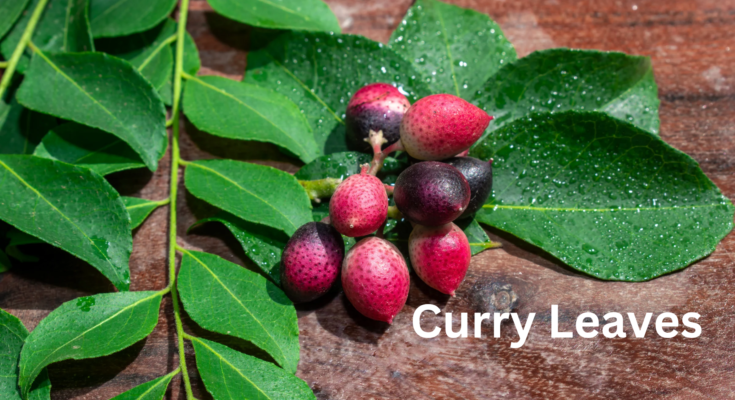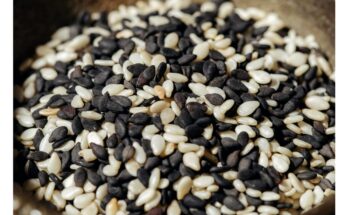The Curry tree (Murraya Koenigii) is a fragrant, deciduous perennial shrub that can grow up to five meters tall. It features numerous arching branches, with dense foliage concentrated at the ends of its twigs.
Characteristics of Curry Leaves
The tree’s leaves, commonly known as curry leaves, are divided into multiple small leaflets. These leaflets are alternate, opposite, and elliptic in shape. They are smooth, thick, and strong with a slightly bitter and aromatic flavor due to their high oil content. Measuring 3.5 to 5.5 cm in length, they have finely toothed edges and a pungent aroma. The tree blooms with sweetly scented, bell-shaped white flowers, while its berries, which ripen in May, are round, purple-black, and grow in clusters.
Nutritional Composition
Curry leaves are rich in nutrients, containing 63.8% moisture, 6.1% protein, 1% fat, 18.7% carbohydrates, 6.4% fiber, and 4% minerals per 100 grams. They are also an excellent source of calcium (830 mg), phosphorus (57 mg), iron (0.93 mg), carotene (7,560 mcg), thiamine (0.08 mg), riboflavin (0.21 mg), niacin (2.3 mg), and vitamin C (4 mg). The leaves provide 108 calories per 100 grams.
Upon steam distillation, fresh curry leaves yield 2.6% volatile oil. This oil is deep yellow with a spicy aroma and a clove-like taste. The leaves also contain a glucoside compound called koenigin.
Health Benefits
Curry leaves act as a natural herbal tonic, aiding stomach function and serving as a mild laxative. Consuming juice from 15 grams of curry leaves mixed with buttermilk is beneficial for digestion.
- Digestive Disorders
Curry leaves help alleviate digestive issues such as nausea, morning sickness, and vomiting caused by indigestion or excessive fat intake. A mixture of one to two teaspoons of fresh curry leaf juice, a teaspoon of lime juice, and honey is an effective remedy. Roasted leaf infusions can also help stop vomiting. A paste made from curry leaves, combined with buttermilk, is a soothing remedy for stomach upsets. - Diarrhea and Dysentery
Tender curry leaves mixed with honey can treat diarrhea and dysentery effectively. Additionally, the tree’s bark is useful for managing bilious vomiting, and a teaspoon of bark powder or its decoction can be taken with cold water for relief. - Hair Health
Regular consumption of curry leaves can prevent and treat premature greying of hair by nourishing hair roots. Healthier, naturally pigmented hair grows from these nourished roots. The leaves can be consumed as chutney or mixed with buttermilk or lassi. Boiling curry leaves in coconut oil until a black residue forms creates a tonic that stimulates hair growth and retains natural pigmentation.
Culinary and Medicinal Uses
Curry leaves have been a staple in South Indian cuisine for centuries, adding a distinct flavor to dishes like sambar, rasam, and curries. They are also used in chutneys made with coriander, coconut, and tomatoes. Beyond the leaves, the tree’s bark and roots are used in traditional medicine for their therapeutic properties.





helloI like your writing very so much proportion we keep up a correspondence extra approximately your post on AOL I need an expert in this space to unravel my problem May be that is you Taking a look forward to see you HABANERO88
I like the helpful information you provide in your articles. I’ll bookmark your blog and check again here frequently. I’m quite sure I’ll learn lots of new stuff right here! Good luck for the next!
Whats Happening i’m new to this, I stumbled upon this I’ve discovered It positively helpful and it has aided me out loads. I’m hoping to give a contribution & assist different customers like its aided me. Good job.
Great post, I conceive people should larn a lot from this blog its really user genial.
I have been absent for some time, but now I remember why I used to love this site. Thanks , I will try and check back more frequently. How frequently you update your web site?
There is evidently a bundle to know about this. I suppose you made some good points in features also.
Real good info can be found on web blog.
You made some first rate points there. I appeared on the internet for the problem and located most people will go together with together with your website.